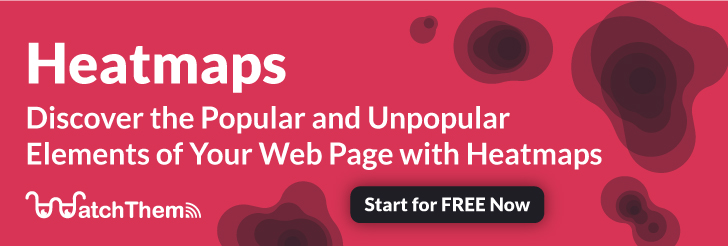Page Contents
Each customer is unique and has their own experience and feedback on a website; we can not make an official recipe for all of them. But for making a good and effective buyer journey map, we should consider two main things:
- Identify the goal behind it
- Know how to apply and use it
A buyer journey map allows us to see through each customer and see what they are going through, so we can make their experience better and more enjoyable.
For more insight on Customer Tracking


What is a Buyer Journey Map?
In the old days, companies’ funnel was linear for each customer. Of course, it’s obsolete nowadays; each company and business should do a funnel optimization to stay in business because today, every customer has their way of interacting with the business. A buyer journey map is a compact visualization of an end-to-end customer experience.
It shows every touchpoint that customers have with the business online or offline and helps us see from their perspective.
Here we try to show how to make such a map and bring some examples for brightening the way.
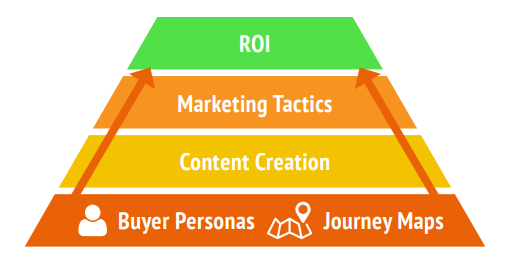

Why Should We Use a Buyer Journey Map?
Customers these days have so many different tastes and opinions that we can’t use an official routine for all of them. So instead, you should analyze every action and fingerprint of their visits so you can memorize them and help them on their next visit. This can help the brand so much.
Let’s categorize these facts in a simpler way.
1. Identifying customer pain points
At each step of the customer journey, the buyer journey map helps you identify how customers feel, their needs, what kind of actions were taken, and what kind of questions they have. Knowing what kind of questions your customers have can help you understand what you should address on your websites. At the end of the day, you end up improving customer experiences.
Here is where WatchThemLive can help you so much.


Our service offers a user behavior tracking tool that provides valuable information about your website’s visitors. In addition to insightful analytics (visitors, page views, sessions, referrers, user segmentation) and real-time data, our tool offers two other powerful features:
- Session Replays: With session recordings, you can track visitors’ actions on your website. You can follow users’ exact journeys through your website as if you are just one of them.
- Heat Mapping: Heat maps are a visual representation of your website’s data that lets your track specific user actions like clicks. Our click maps show you which elements on your website receive more clicks. You can use them to find out if your CTAs are attracting enough attention or not, for example.
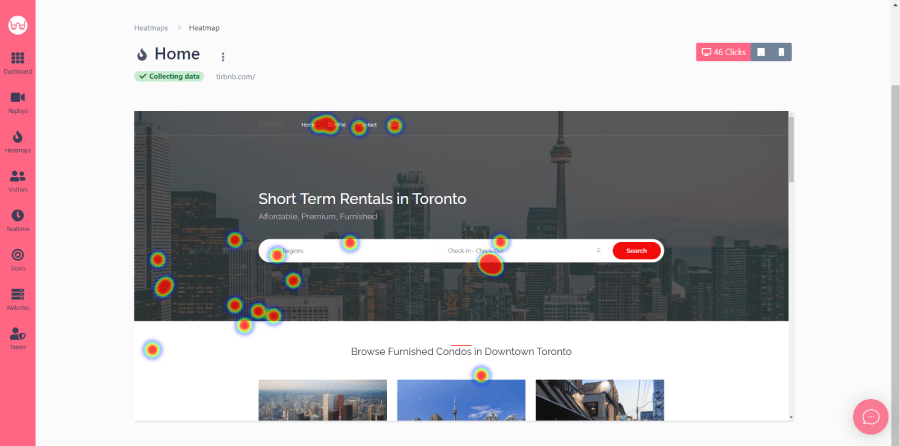

2. Improves customer retention
When you address the needs and interests of each customer individually, it’s more likely to satisfy them and keep them loyal for the days to come.
3. Improves your marketing efforts
It’s obvious that with a better understanding of your customers and their interests you can make your decisions according to them and the profits will ascend.
Customer journey maps give businesses a way of getting into their customers’ heads, helping them gain valuable insight and understanding regarding common customer pain points. They also aid in building empathy for customers, assisting brands in understanding what buyers want and how they feel.
How to Create an Effective Buyer Journey Map?
Depending on your business, product, or service, the small details may be different and can be unique, but some things are general, and all should have in mind.
1. Profile Your Personas and Define Their Goals
The first thing to do is to know your customers and what they want individually. The best way to do this is by asking questions about them. But it’s important to make sure that you are asking the actual customers, not somebody who is not interested in your business.


2. Map Out Buyers’ Touchpoint
“Touchpoint” refers to any time customers interact with your brand – before, during, or after purchasing something from you. This also includes moments that happen offline/online, through marketing, in person, or over the phone.
Maybe you think it’s hard to find out all the possible touchpoints, but the best way to do this is to ask yourself questions that the customer might ask themselves, like:
- …Do I have a problem that your product/company solves?
- …Have I discovered the product or business that solves my problem?
- …Did I make my purchase decision?
- …Have I reencountered the business after the purchase?
3. Mapping Pain Points
At this point, you should bring all the data that you have collected in the previous steps and identify potential roadblocks or pain points in the buyer’s journey. And also, notice where you are doing right, and there is no need to mess them up.


4. Fix roadblocks
Now that you have identified the touchpoints that most customers are complaining about and are roadblocks for your business, it’s time to fix and change them. Recognize that the end goal is not to optimize each step or touchpoint just for optimizing it, but so that you can push your customers down the funnel and bring them one step closer to converting.
5. Update and Improve
In our time, nothing can be unchanged and still good because everything from businesses type to the customers’ tastes is changing so fast that you should check your buyer journey map regularly and update it.
Buyer Journey Map Examples
These are some examples of buyer journey maps that can help you and give you insight into how to make one of them.
1. WatchThemLive
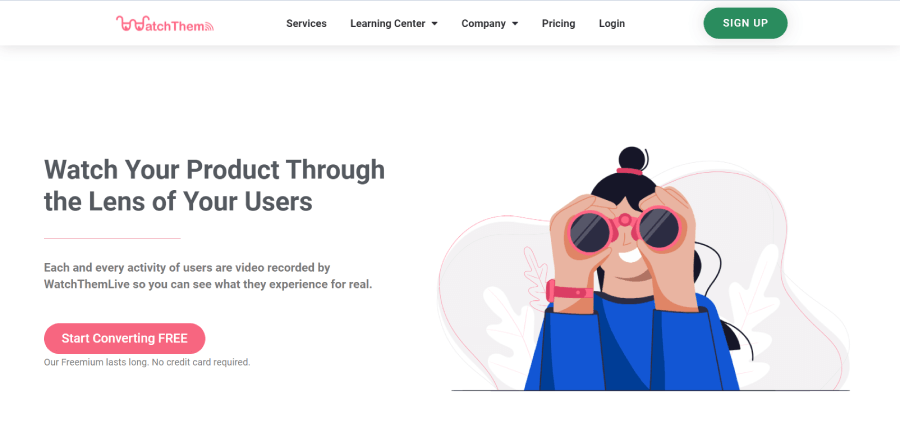

Our service offers a user behavior tracking tool that provides valuable information about your website’s visitors. This information is the best way to create your buyer journey map and show your website’s weak and strong points. We do these by two primary services:
- 1. Session Replay
With session replay, you can see the customer journey from beginning to the end and understand the places that can make it difficult for them or act well enough.
- 2. Heat Mapping
With heat mapping in hand, you also can see your website from a top view and understand where it is more in the center of the customer’s attention.
2. Dapper Apps
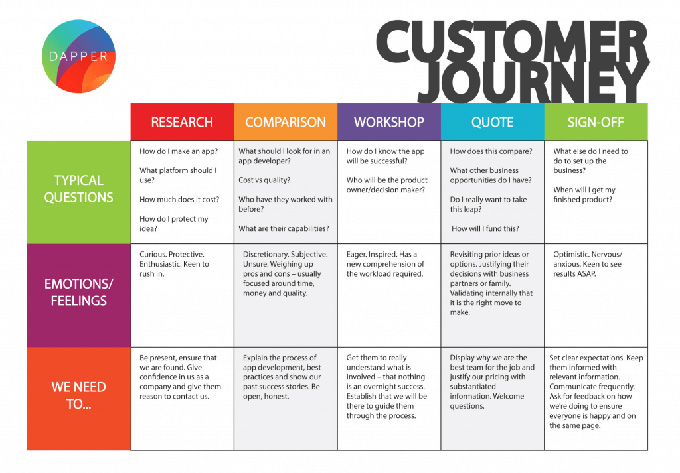

This customer journey map clearly outlines the five steps Dapper Apps believes a customer goes through when interacting with them. As you can see, it goes beyond the actual purchasing phase by incorporating initial research and post-purchase needs.
3. Ecommerce Buyer Journey Map
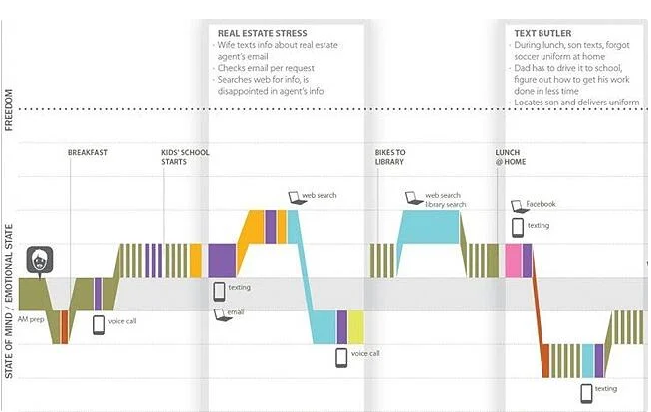

This fictitious customer journey map is a clear example of a day in the life map. Rather than just focusing on the actions and emotions involved with the customer’s interaction with the company, this map outlines all the customer experiences on a typical day.
4. Future B2C Customer Journey Map
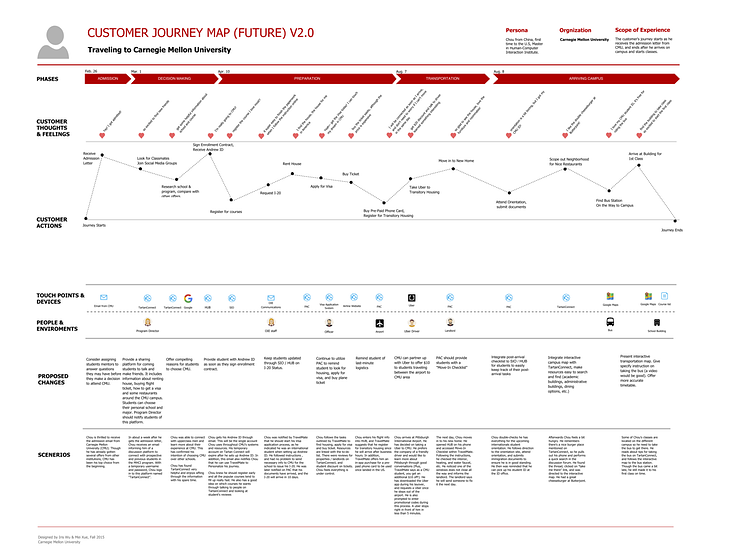

This customer journey map, designed for Carnegie Mellon University, exemplifies the usefulness of a future state customer journey map. It outlines the thoughts, feelings, and actions the university wants its students to be having and the touchpoints, devices, people, and environments it wants students to be interacting with.
When Should You Create a Buyer Journey Map?
Buyer journey maps usually are built in the beginning and research period, but it’s important to have a specific goal for your business to address the map accordingly. Otherwise, it’s not that useful to make a buyer journey map to make it.
Conclusion
Buyer journey maps give businesses a way of getting into their customers’ heads, helping them gain valuable insight and understanding regarding common customer pain points. In addition, it helps to know your business’s weaknesses and strong points.


